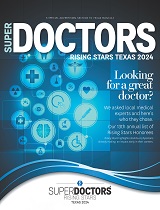American Heart Association
News Release (AHA)
August 22, 2013
Study Highlights:
- People who ate more than two servings of fruit daily had a 25 percent lower risk of abdominal aortic aneurysm than those who ate the least fruit.
- While no association was found for vegetables, researchers stress that vegetables also remain important for health.
Eating more fruit may decrease your risk of suffering a dangerous vascular condition, according to new research in the American Heart Association journal Circulation.
In a Swedish study, people who reported eating more than two servings of fruit daily had a lower risk of abdominal aortic aneurysm than those who ate the least amount of fruit.
Abdominal aortic aneurysm is a ballooning of the lower part of the aorta, the main blood vessel that supplies the body. It’s relatively rare, but can be lethal. Older men, especially those who have smoked, are at higher risk.
Ultrasound screening, which uses sound waves to image structures in the body, can easily detect the condition.
Researchers divided more than 80,000 people, ages 46-84, into four equal-size groups based on how much fruit and vegetables they reported eating.
In the next 13 years, hospital and death records showed 1,086 people had abdominal aortic aneurysms, including 222 whose aneurysms ruptured. More than 80 percent of the aneurysms and ruptures were in men.
Researchers found:
- Compared to those eating the least amount of fruit (less than one full serving), those who ate the most (more than two servings daily, not counting juice) had a 25 percent lower risk of the aortic condition and 43 percent lower risk of a ruptured aneurysm.
- Compared to those who didn’t eat any fruit, those who had two servings a day had a 31 percent lower risk of a nonruptured aneurysm and a 39 percent lower risk of a ruptured aneurysm.
“A high consumption of fruits may help to prevent many vascular diseases, and our study suggests that a lower risk of abdominal aortic aneurysm will be among the benefits,” said Otto Stackelberg, M.D., lead author and a Ph.D. student at the Institute of Environmental Medicine’s Nutritional Epidemiology Unit at Karolinska Institutet in Stockholm.
High levels of antioxidants in fruits might protect against abdominal aortic aneurysm by preventing oxidative stress that can promote inflammation.
Researchers found no association for vegetables, which are also rich in antioxidants. Vegetables lack some types of antioxidants that are in fruits, which might help explain the fruit versus vegetable findings, Stackelberg said.
“Vegetables remain important for health. Other studies have found that eating more fruits and vegetables may decrease the risk of cardiovascular diseases, type 2 diabetes, high blood pressure, and several cancers,” Stackelberg said.
In the study, people ate apples and pears the most, followed by bananas, oranges and other citrus fruits.
The American Heart Association advises the average adult to eat four to five servings each of fruits and vegetables daily, based on a 2000 calorie diet. A diet rich in vegetables and fruits is a way of getting important nutrients that most people don’t get enough of, including folate, magnesium, potassium and dietary fiber, as well as vitamins A, C, and K. They are also naturally low in saturated fat and cholesterol.
Being a nonsmoker is also crucial in preventing abdominal aortic aneurysm, Stackelberg said. “Never start smoking; and if you already do smoke, quit today. It’s never too late.”
Co-authors are Martin Björck, M.D., Ph.D.; Susanna C. Larsson, Ph.D.; Nicola Orsini, Ph.D.; and Alicja Wolk, D.M.Sc. Author disclosures are on the manuscript.
The Swedish Research Council and Karolinska Institutet funded the study.

